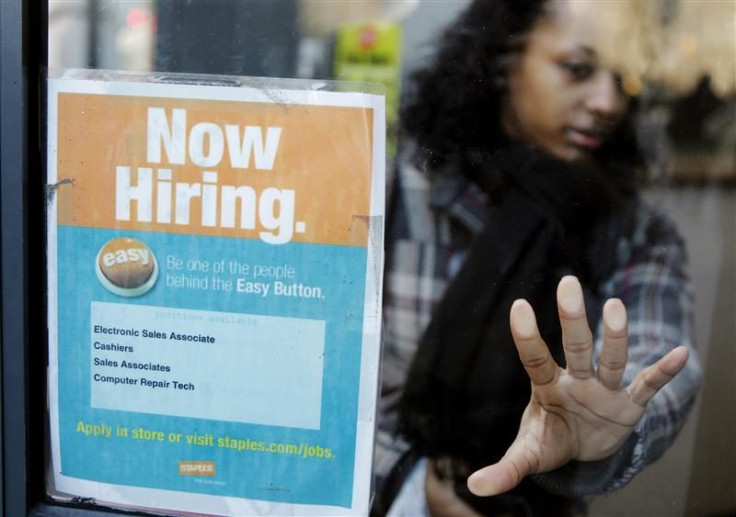Jobless Claims Jump To 380,000, Higher Than Forecast

Claims for jobless benefits rose to 380,000 last week, giving economists another piece of data to worry about after a gloomy job market showing in March. Meanwhile, a Federal Reserve report published Wednesday painted a picture of a recovery that continues to press ahead, however, modestly, amid concerns of higher fuel prices.
In the week ended April 7, applications for unemployment insurance payments increased by 13,000 from the previous week's upwardly revised figure of 367,000, to 380,000, according to data from the Labor Department issued Thursday in Washington. That's the highest level since Jan. 28 and missed the 355,000 claims economists polled by Bloomberg had forecast.
The four-week moving average, considered a better measure of labor market trends because it smooths out weekly fluctuations, was 68,500, an increase of 4,250 from the previous week's revised average of 364,250 for first-time benefit applicants.
Job gains are of great importance because they lead to income growth and that supports consumer spending, which accounts for more than 70 percent of the U.S. economy.
March's disappointing employment report has raised concerns that the solid momentum in hiring and retail sales shown earlier in the year may have been merely temporary, Diane Schumaker-Krieg, global head of Research & Economics at Wells Fargo, wrote in a note.
U.S. employers hired a less-than-expected 120,000 workers in March, while the unemployment rate dropped to a cycle low of 8.2 percent on declining labor-force participation.
Sluggish real income growth remains the economy's most pressing concern, Schumaker-Krieg said.
Generally, declines in the unemployment rate over time correspond with an increase in earnings. However, the average workweek for all employees on private nonfarm payrolls decreased to 34.5 hours in March from 34.6, while the average hourly earnings fell to $806.96 in March from $807.56.
Continuing Claims
The number of people filing for benefits after an initial week of aid decreased by 98,000, to 3.25 million in the week ended March 31.
The continuing claims figure doesn't include the number of Americans receiving extended benefits under federal programs.
The four-week moving average for the week ended March 31 fell 35,750 to 3.33 million from the preceding week's revised average of 3.37 million.
Fed
A Federal Reserve survey, known as the Beige Book, found the U.S. economy kept growing at a modest-to-moderate rate in the late winter months, but rising prices for gasoline and other energy products were giving consumers headaches.
While the near-term outlook for household spending was encouraging, contacts in several districts expressed concerns that rising gas prices could limit discretionary spending in the months to come, the report said.
Stock index futures gained Thursday. The S&P 500 futures rose 5.10 points and Dow Jones Industrial average futures added 46 points.
© Copyright IBTimes 2024. All rights reserved.












